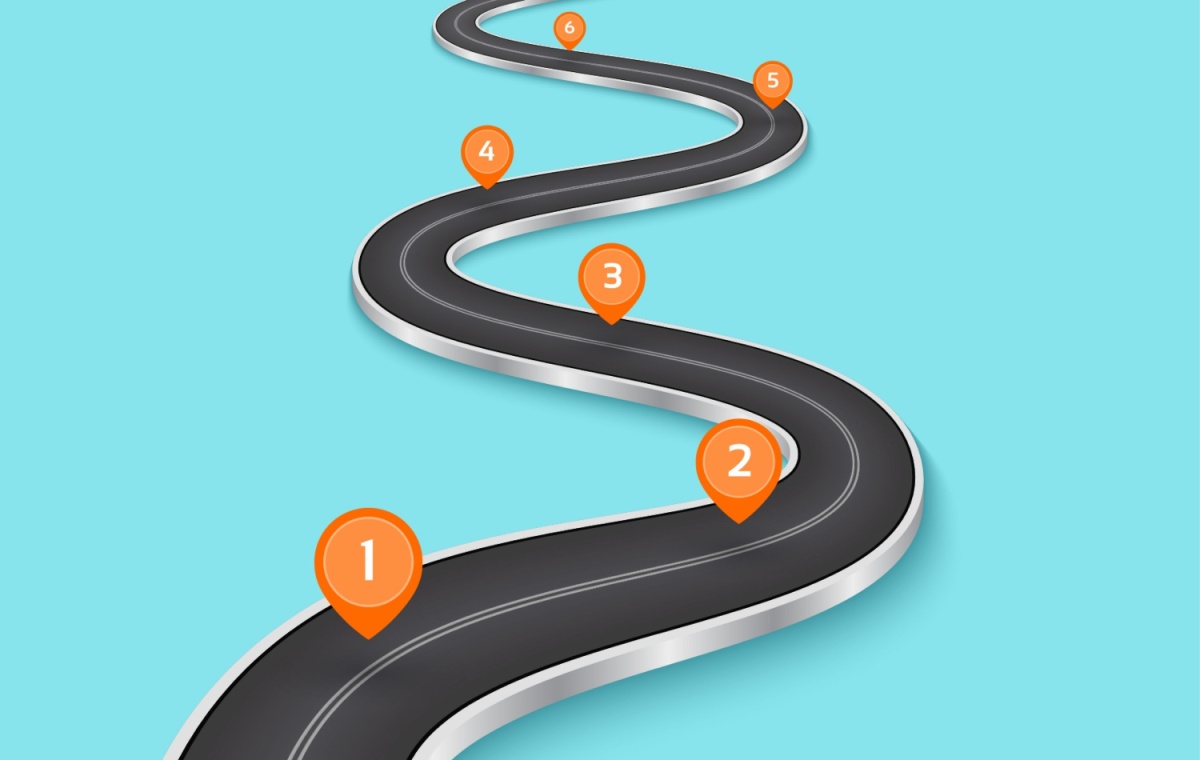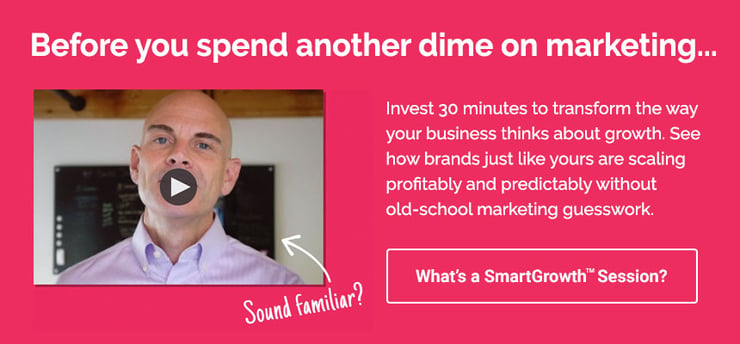In B2B sales, patience is key. The buyer’s journey from initial contact to closing the deal spans an average of 102 days, requiring a delicate balance of nurturing, educating, and trust-building. The nature of B2B transactions—involving multiple decision-makers and significant investments—underscores the need for consistent and customer-centric messaging.
This complexity requires a robust B2B marketing strategy that engages buyers at every touchpoint. From websites optimized for conversion to an omnichannel content approach tailored to different stages of the buying process, successful B2B marketing hinges on anticipating needs, addressing concerns, and showcasing expertise with empathy. Join us as we delve deeper into the art of crafting a compelling content strategy that resonates at every stage of the B2B buyer's journey.
What is the B2B Buyer Journey?
The B2B buyer journey refers to the complex and thought-intensive process that customers undergo when making purchasing decisions. Unlike impulse-driven B2C transactions, B2B purchases are characterized by longer sales cycles, multiple stakeholder involvement, and a higher degree of due diligence. Understanding this nuanced path—from awareness, consideration, and decision to post-purchase evaluation—is paramount for B2B brands aiming to not just survive, but thrive in an increasingly competitive market.
A profound grasp of the B2B buyer's journey empowers brands to sculpt a content marketing strategy that's not merely reactive, but predictive and proactive. By meticulously mapping out each stage of this process, brands can anticipate the needs and concerns of potential clients. This method transforms content from generic pitches into valuable resources that speak directly to a buyer's current predicaments and aspirations. When a brand fully comprehends the buyer's journey, every piece of content becomes a strategic tool, strengthening the brand's position as an industry authority and trusted advisor. This level of strategic insight doesn't just attract leads—it cultivates lasting relationships, setting the foundation for sustained business growth and customer loyalty.
How to Design Your Website for the B2B Buyer Journey
Your B2B website must transcend the traditional role of a digital brochure. It's not just an information repository, but a dynamic, strategic conversion tool poised to guide potential clients through each phase of the buyer's journey. To be effective, B2B websites must excel in attracting, engaging, and converting prospects with precision and intent.
- Start with an intuitive design that caters to the specific needs at every stage of the buyer's journey. From the moment visitors land on your site, every element should contribute to a seamless experience. Navigation should be straightforward, leading visitors naturally from initial discovery to deeper engagement with resources like blog posts, case studies, and product demonstrations.
- Leverage personalized content and strategic website copywriting to address the unique challenges and questions of your diverse audience segments. Create pages and content that meet visitors wherever they are in the journey, offer empathy, demonstrate expertise, and convey your competitive advantage.
- Incorporate strong calls-to-action (CTAs) throughout. Encourage visitors to take the next step– whether it's downloading a resource, signing up for a webinar, or subscribing to an email newsletter. Each CTA should be clear, compelling, and relevant to the content surrounding it, effectively nudging visitors closer to conversion with each interaction.
- Create quality content. Content quality cannot be overstated. High-quality, authoritative content that addresses specific industry challenges or questions showcases your expertise and builds trust with your audience. It positions your brand not just as a service or product provider, but as a thought leader in your industry.
- Optimize for conversions. Analyze visitor behavior to continuously refine and enhance the user experience. This includes a responsive design for mobile users, fast loading times, and clear metrics for measuring engagement, conversion rates, and other critical KPIs.
In essence, a well-architected B2B website acts as a guide, leading potential buyers from awareness through to decision-making with confidence and clarity. It’s a powerhouse tool that, when leveraged with expertise, can transform passive visitors into engaged prospects and, ultimately, loyal customers.
Merging an Omnichannel Approach with the B2B Buyer Journey
Utilizing an omnichannel approach in B2B marketing is not just beneficial—it's imperative. Blogs, social media, email marketing, podcasts, and long-form videos each serve as pivotal touchpoints in addressing the diverse stages of the buyer's journey. This multifaceted strategy ensures that your brand communicates with empathy, authority, and expertise, meticulously anticipating and addressing buyer needs, questions, and objections at each step.
Why is consistent messaging across platforms vital to effective B2B marketing? The B2B buyer's journey is long, involving multiple touchpoints and stakeholders. Prospects prefer to move at their own pace, absorbing information, and making decisions as they progress through the buying cycle. A disconnect in messaging across these channels can lead to confusion and dilute the trust you've worked hard to build. On the other hand, coherent and unified messaging reinforces your brand's narrative, making your message more resonant and memorable.
An omnichannel approach allows for seamless content integration across platforms, ensuring that the core message and value proposition remain consistent whether a prospect encounters your brand through a blog post, a LinkedIn article, an insightful podcast episode, or an engaging video. Each channel has its unique strengths—blogs and long-form videos provide in-depth exploration of topics, social media offers engagement and community building, email marketing delivers personalized communications, and podcasts present a voice for your brand's expertise. These distinct channels, when harmonized, offer comprehensive content that caters to different learning styles and preferences, further nurturing prospects into informed decision-makers.
Highlighting expertise through varied content forms showcases your brand's thorough understanding of the industry and builds a rapport with the audience by consistently providing value. A unified content strategy significantly impacts decision-making for customers ready to convert. When every piece of content—regardless of the platform—aligns in messaging, tone, and value proposition, it creates a compelling narrative that prospects can trust. This trust, built over time through repeated and consistent exposure to your brand's messaging, fosters confidence in choosing your brand over a competitor's. An omnichannel approach not only nurtures leads but accelerates the buyer's journey from awareness to decision, ensuring that when the time comes to make a choice, your brand stands out as the authoritative, empathetic, and preferable option.
How to Structure Content Marketing Around the B2B Buyer Journey
Building Brand Awareness with Top-of-Funnel Content
At the very top of the customer acquisition funnel, the primary goal is to capture the attention of potential customers who may not yet be familiar with your brand or even be aware they have a problem your product or service can solve. This is where top-of-funnel content plays a crucial role. It's designed to be broadly appealing, informative, and engaging, aiming to build brand awareness and gently guide potential buyers into the funnel. The purpose of this content is not to sell, but to educate, inform, and offer value, establishing your brand as a helpful, knowledgeable authority in your industry.
Effective top-of-funnel content varies widely but often includes "How to" articles that provide practical advice or solutions to common challenges your target audience faces. For example, a "How to Maximize Your Social Media Engagement" article can attract business owners looking to enhance their online presence. Similarly, social posts highlighting customer problems or pain points, such as "Struggling to streamline your team's workflow?" can resonate deeply, prompting engagement from those experiencing these issues. Infographics that distill complex industry data into digestible, shareable content and engaging videos that explain broader market trends or insights also serve as powerful tools for attracting potential customers. These types of content work because they speak directly to the interests and needs of your audience, making the first critical connection that can lead them further down the sales funnel.
Cementing Decisions with Bottom-of-Funnel Content
The objective of bottom-of-funnel content is crystal clear—it's designed to seal the deal. This type of content targets prospects in the final stages of their buying journey, actively seeking a solution that your product or service can fulfill. At this juncture, the goal is to solidify their decision to choose your offering over the competition by showcasing the unique value and benefits you bring to the table.
Examples of impactful bottom-of-funnel content include:
- Case Studies: These provide compelling narratives of how your product or service solved real-life challenges customers face, illustrating its effectiveness and the positive outcomes achieved. Case studies resonate because they offer concrete evidence of success, presenting relatable scenarios that prospective buyers can envision for themselves.
- Comparison Pages: Such content directly contrasts your offerings with your competitors, highlighting your distinct advantages. By addressing common comparisons your prospects are likely to make, you ensure they have the information needed to understand why your solution is superior.
- Testimonials: Genuine feedback from satisfied customers can significantly influence buying decisions. Testimonials build trust and credibility, and offer proof that others have successfully used your product or service and are happy with the results.
- Statistics: Presenting hard data and statistics related to your product’s success can effectively address any remaining doubts or concerns, providing the factual reassurance needed to move forward with a purchase.
It's imperative to share this bottom-of-funnel content across all platforms to ensure that wherever your prospects are in their digital traversing, they encounter strong, persuasive arguments in favor of your brand. This omnipresent approach bolsters confidence in your offerings, meticulously addresses any lingering customer objections, and reinforces the perception of your brand as a leader in the field. Remember, the combination of authoritative content, strategically placed across your digital presence, not only aids in overcoming final hurdles but also plays a vital role in transforming prospects into delighted customers.
Final Thoughts on Marketing for the B2B Buyer Journey
The B2B buyer journey is notoriously long. The digital landscape is increasingly noisy.
Capturing and keeping your ideal customers’ attention—it’s no small task.
An omnichannel content marketing strategy that addresses your audience’s questions, objections, and doubts while building authority, empathy and trust can educate prospects and instill confidence in your solution before a meeting gets booked or a sales call is made. Today’s B2B buyers don’t want to be bothered. They want to do their research, have the internal conversations they need to, and reach out when they’re ready. Having your content integrated and aligned with the B2B buyer journey across all channels ensures that wherever they are in the process, you have the right messaging to meet them there and keep them moving toward conversion.
Weaving the B2B buyer journey into all forms of content is just one of the ways we help B2B brands scale profitably and predictably. Our clients lean on us for go-to-market strategy, content creation, website design, paid search, and much more. Discover how we take the guesswork out of marketing by booking a no-obligation introduction to Brand Theory today.




.png)
.png)
.png)